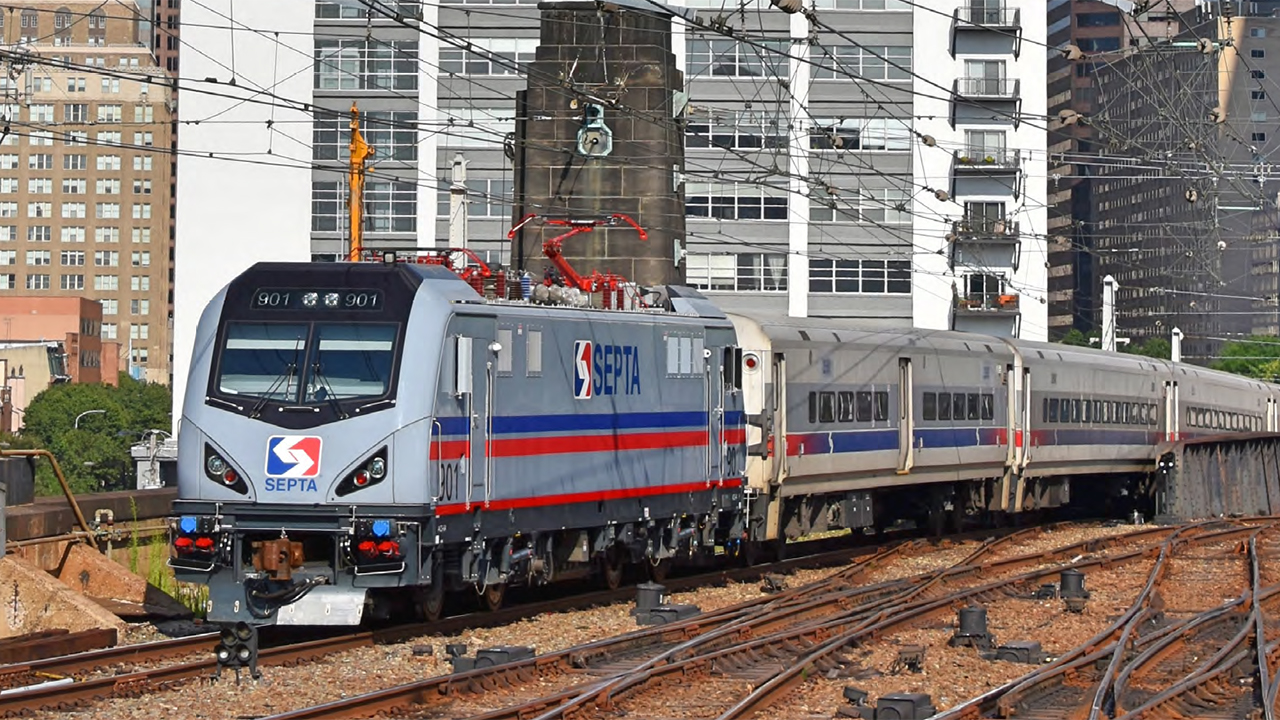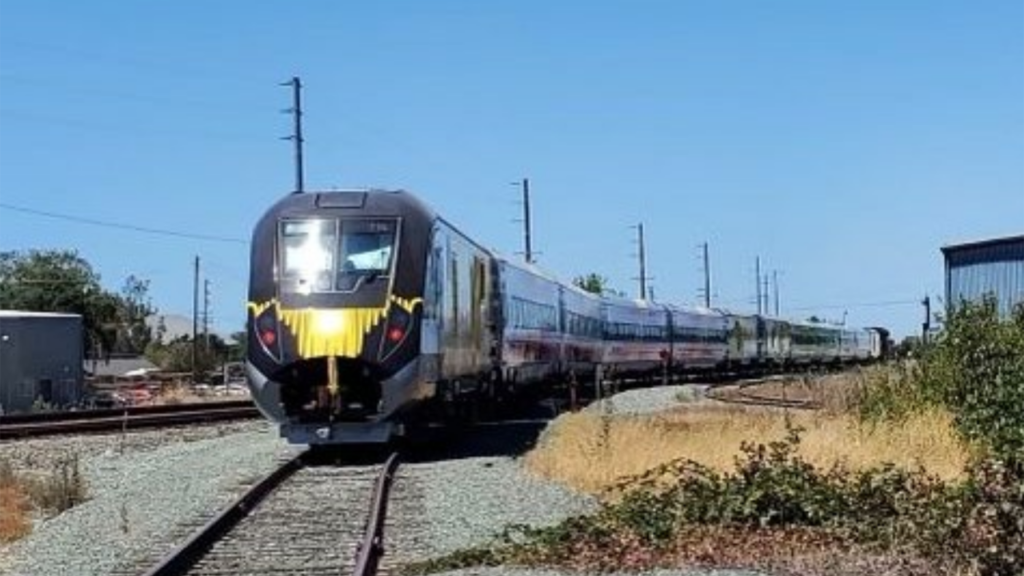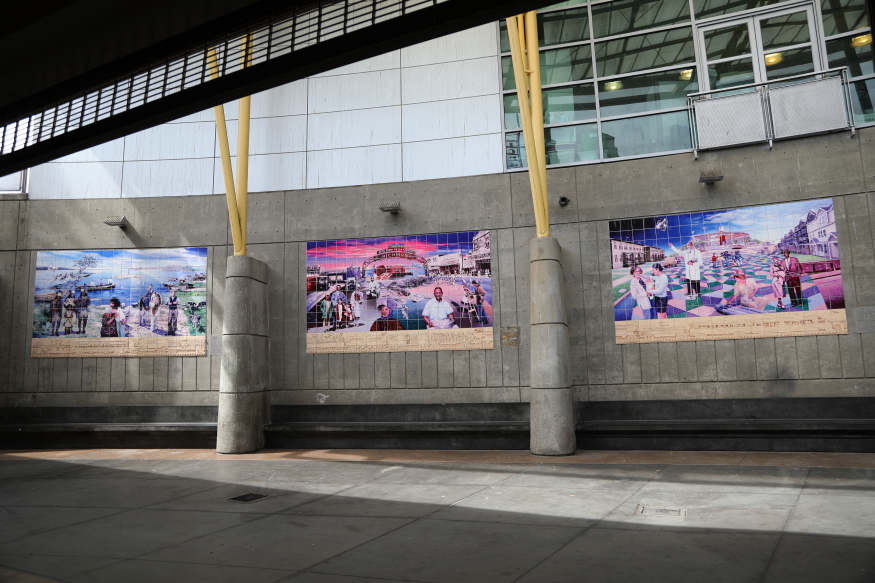
Passenger Rail Briefs: SEPTA, Brightline, BART
Written by Carolina Worrell, Senior Editor
SEPTA Key Advantage allows institutions to acquire SEPTA Key cards directly from the Authority and distribute them to employees.
The Southeastern Pennsylvania Transportation Authority (SEPTA) expands its institutional pass program. Also, Brightline’s Bright Pink 2 and Bright Green 2 are en route to Florida and a mural at Bay Area of Rapid Transit’s (BART) Richmond Station continues to inspire.
SEPTA
After a successful launch with three introductory partners, SEPTA says it is expanding SEPTA Key Advantage, its institutional pass program, by inviting more organizations to participate and help bolster “an inclusive recovery for the region.”
SEPTA Key Advantage, which was initially launched on May 1, allows institutions to acquire SEPTA Key cards directly from the Authority and distribute them to employees.
Last month, SEPTA’s Board approved Operating and Capital Budget proposals for Fiscal Year 2023 allowing for the expansion of SEPTA Key Advantage. While Phase I is under way with Drexel University, Penn Medicine and Wawa stores in Philadelphia, SEPTA’s Board approved a tariff change to make the program permanent.
More than 15,000 Drexel University, Penn Medicine and Wawa employees are eligible for SEPTA Key Advantage, with more than 7,000 already using the passes. SEPTA says the program has provided a significant boost in ridership at the three institutions—an 18% increase in just the first month—with additional gains expected.
“We are thrilled with the initial rollout of SEPTA Key Advantage,” said SEPTA General Manager and CEO Leslie S. Richards. “The program has generated a lot of interest from other employers, and we are excited to be able to extend the benefits of the program to more organizations.”
Participants can use a new or existing SEPTA Key card for their pass. Just like the Monthly Anywhere TrailPass, SEPTA Key Advantage passes can be used on all SEPTA modes, including Regional Rail, Market-Frankford Line, Broad Street Line, Norristown High Speed Line, and city and suburban buses and trolleys.

rolling stock facility in California! Let the cross-country journey begin. We’re #OnTrackToOrlando,” Brightline tweeted on July 9. (Photograph Courtesy of Brightline via Twitter)
Brightline
Brightline’s Bright Pink 2 and Bright Green 2 are en route to Florida from the Siemens Mobility North American rolling stock facility in Sacramento, Calif., according to a July 9 post on Brightline’s Twitter feed.
The new trainsets will operate along Brightline’s Phase I, 67-mile, three-station line from Miami to West Palm Beach and its Phase 2, 170-mile extension to Orlando.

BART
BART recently joined with Bay Area artists Daniel Galvez and Joe Sances to reflect on the creation of their large-scale mural, which was first installed at Richmond Station in 2007. Fifteen years later, the artists say the mural’s colors are nearly as vibrant as the day it was put up.
The mural, titled “On the Right Track,” features three eight-by-twelve-foot panels of durable tile each spotlighting a different aspect of Richmond history, from its original native inhabitants—the Ohlones—to current residents.
The mural began in the Richmond library, where Galvez and Sances researched local history and major events and figures. With ideas swirling in their minds, the artists then hosted a series of community meetings, in which they met with locals bearing photographs of themselves and family. Some of the photographic imagery was incorporated into the mural.
If you can look past the colorful tiles and lower your gaze a few feet, you’ll notice a series of beige, hand-carved ceramic pieces that depict a railroad, carrying everything from a mariachi band to a bear cub and his mom. The handcrafted tiles spotlight Richmond culture and history, while adding a certain playfulness and tactility for children passing through.
“I like the fact that it was Jos’s idea to introduce the lower ceramic pieces because it’s more children’s height,” Galvez said. “If they’re really curious, they could stand on the bench and look at the mural and feel it.”
The goal of the mural, ultimately, is to engage people. Galvez’s painting philosophy derives from “Los Tres Grandes,” Mexican muralists who painted on a grand scale throughout the 20th century.
“The point of [Los Tres Grandes’] work was for people to see art daily and enrich their lives and see their history,” Galvez said. “It’s art that’s integrated into people’s lives.”
Painting actual Richmond residents was a major component of integrating the artwork into the fabric of Richmond culture.
“When people see images of themselves done in such a particular way, it’s really elevating,” Sances said. “I think the whole community gets a lift from that.”



